
Cornish Metals Reports Final Drilling Results From Wide Formation Exploration Programme

Cornish Metals Inc. (AIM:CUSN) (TSX-V: CUSN) a mineral exploration and development company focused on advancing its 100% owned and permitted South Crofty tin project in Cornwall, United Kingdom, is pleased to report results from the last eight drill holes of the recently completed 14-hole / 8,993m drilling programme at its Wide Formation target, located approximately 1km south of the South Crofty mine (Figure 1).
The programme successfully tested the geometry and continuity of tin mineralisation within a 2,500m by 800m extent of the Wide Formation, located between and sub parallel to the past producing Great Flat Lode to the south, and the Dolcoath and South Crofty mines to the north (Figure 8). In addition to the Wide Formation, drilling also intersected tin mineralisation associated with the Great Flat Lode and the Great Flat Lode Splay identified earlier in the programme (see news release dated February 4, 2024), as well as the interpreted eastern extension of the Great Condurrow Mine’s Main Lode, and several strongly mineralised steeply dipping zones locally referred to as ‘Droppers’.
The numerous mineralised lodes and structures encountered during the programme have increased overall confidence in the Company’s exploration model and confirm the potential of systematic exploration drilling to make new discoveries and expand Mineral Resources within the South Crofty mine permission area and elsewhere within Cornish Metals’ extensive mineral rights in the region.
Highlights
- Wide Formation structure has been confirmed over a strike length of over 2,500m and a downdip extent of at least 800m, with true thicknesses ranging from approximately 2m to 10m. The structure remains open at depth and along strike.
- Notable tin intercepts within the Wide Formation (Figure 5) include:
- 10.55m grading 0.19% Sn including a zone of 1.49m grading 0.72% Sn in CB23_012
- Notable tin intercepts from the steeply-dipping, high-grade ‘Dropper’ zones identified primarily between the Great Flat Lode and the Wide Formation, including:
- 1.56m grading 0.76% Sn in CB23_010
- 2.07m grading 0.85% Sn in CB23_012
- 1.97m grading 0.66% Sn in CB23_012
- Notable tin and copper (“Cu”) intercepts from a new structure interpreted as the eastern extension to Great Condurrow Mine’s Main Lode (Figure 7), including:
- 2.11m grading 0.58% Sn and 5.48% Cu in CB23_011
- Table 1 below presents all significant intercepts.
Ken Armstrong, Interim CEO and Director of Cornish Metals, stated: “This drilling programme has validated the Wide Formation as a new, large-scale, tin-bearing exploration target that is potentially accessible from the underground workings at South Crofty. Mineralisation has been traced over a 2,500m extent, up to 800m down dip, and remains open along strike and to depth. Furthermore, in addition to the earlier discovery of the Great Flat Lode Splay and new ‘Dropper’ zones of high-grade tin mineralisation, the discovery of polymetallic tin and copper mineralisation within the interpreted extension of the Great Condurrow Mine’s Main Lode further demonstrates the exploration potential of the South Crofty area.”
Wide Formation
The Wide Formation represents a high-grade “payshoot” controlled tin target in the Carn Brea South exploration area, located along the southern boundary of the South Crofty underground mine permission area. The 14-hole, 8,993m drilling programme was designed to test the geometry and the continuity of tin mineralisation within the Wide Formation over an area measuring 2,500m along strike (northeast to southwest) and 800m downdip to the southeast. The Wide Formation is characterised by strong tourmaline mineralisation, with local concentrations of significant cassiterite (tin) mineralisation, typical of all historically mined tin-bearing structures in the South Crofty area.
Great Flat Lode Splay
Drilling continued to intersect a previously unrecognised splay lode structure found immediately beneath the Great Flat Lode. Termed the Great Flat Lode Splay, this mineralised structure varies up to 9m in thickness, and represents an important new exploration target less than 280m below surface (Table 1 and accompanying figures).
New Steeply Dipping Tin Zones
As the programme progressed, drilling continued to intersect multiple steeply dipping high-grade tin zones, mainly located between the Great Flat Lode and the Wide Formation (Figures 2, 3, 4 and 5). With the increasing intersections of these new structures, it is possible to confirm continuity of individual structures between drill holes. From the intercept pattern, an E-W trending ‘corridor’ has been identified where these structures are interpreted to occur, representing a priority exploration target to be confirmed with future drilling. Targets of highest priority are areas where these structures are interpreted to intersect both the Great Flat Lode and the Wide Formation. These intersection points represent areas of greater fracturing and therefore increased potential for high grade tin mineralisation.
Great Condurrow Main Lode
Drill hole CB23_011, intersected significant polymetallic (tin and copper) mineralisation within the interpreted eastern extension, across the Great Crosscourse fault, of Great Condurrow Mine’s Main Lode. Further drilling will be necessary to fully quantify the prospectivity of this target and to confirm the geometry of the zone. However, the location of this intercept proximal to the Wide Formation and South Crofty mine, is considered significant and confirms exploration potential of the Carn Brea district.
| Hole ID | From (m) | To (m) | Length (m)1 | Sn % | Comments | |
| CB23_007 | 62.67 | 65.29 | 2.62 | 1.27 | Great Flat lode | |
| Including | 62.67 | 63.57 | 0.90 | 1.46 | ||
| CB23_007 | 394.45 | 395.04 | 0.59 | 1.02 | Vein | |
| CB23_007 | 496.67 | 497.20 | 0.53 | 0.70 | Vein | |
| CB23_007 | 574.85 | 578.89 | 4.04 | 0.01 | Wide Formation | |
| CB23_008 | 172.93 | 174.93 | 2.00 | 0.32 | Great Flat lode | |
| CB23_008 | 178.66 | 179.64 | 0.98 | 0.25 | Great Flat Lode splay | |
| CB23_008 | 637.13 | 644.91 | 7.78 | 0.04 | Wide Formation | |
| CB23_009 | 41.63 | 48.18 | 6.55 | 0.01 | Great Flat lode | |
| CB23_009 | 135.08 | 136.33 | 1.25 | 0.64 | Quartz haematite structure | |
| Including | 135.08 | 135.58 | 0.50 | 1.12 | ||
| CB23_009 | 298.74 | 299.92 | 1.18 | 0.45 | Quartz haematite structure | |
| Including | 298.74 | 299.37 | 0.63 | 0.84 | ||
| CB23_009 | 552.41 | 562.43 | 10.02 | 0.03 | Wide Formation | |
| CB23_010 | 124.20 | 126.40 | 2.20 | 0.13 | Great Flat Lode | |
| CB23_010 | 247.44 | 249.00 | 1.56 | 0.76 | Quartz haematite structure | |
| Including | 247.44 | 247.84 | 0.40 | 2.45 | ||
| CB23_010 | 614.46 | 622.37 | 7.91 | 0.05 | Wide Formation | |
| Including | 618.38 | 618.74 | 0.36 | 0.83 | ||
| CB23_0112 | 354.16 | 356.27 | 2.11 | 0.58 | 5.48% Cu | Eastern extension of Great |
| Including | 355.16 | 355.66 | 0.50 | 1.47 | 9.91% Cu | Condurrow Main Lode |
| CB23_012 | 144.36 | 148.27 | 3.91 | 0.28 | Great Flat Lode | |
| Including | 146.84 | 147.44 | 0.60 | 0.91 | ||
| CB23_012 | 329.5 | 334.78 | 5.28 | 1.06 | Altered tourmaline stockwork | |
| Including | 331.54 | 333.71 | 2.17 | 1.89 | ||
| CB23_012 | 405.71 | 407.78 | 2.07 | 0.85 | Quartz haematite structure | |
| Including | 405.71 | 406.65 | 0.94 | 1.04 | ||
| CB23_012 | 609.91 | 610.74 | 0.83 | 0.52 | Quartz haematite structure | |
| CB23_012 | 615.03 | 617.00 | 1.97 | 0.66 | Quartz haematite structure | |
| Including | 616.18 | 617.00 | 0.82 | 1.32 | ||
| CB23_012 | 684.43 | 694.98 | 10.55 | 0.19 | Wide Formation | |
| Including | 693.49 | 694.98 | 1.49 | 0.72 | ||
| Including | 693.49 | 693.99 | 0.50 | 2.12 | ||
| CB23_013 | 132.11 | 136.91 | 4.80 | 0.07 | Wide Formation | |
| CB23_014 | 140.79 | 145.30 | 4.51 | 0.07 | Great Flat Lode | |
| CB23_014 | 635.60 | 637.72 | 2.12 | 0.06 | Wide Formation | |
Table 1: Selected drilling results from holes 7-14 at the Wide Formation target.
Note 1: True thickness of down-hole intersections reported are expected to be approximately 70-98% of the down-hole lengths.
Note 2: Hole CB23_011 was abandoned before reaching the target depth of the Wide Formation.
| Hole ID | Hole Length |
| CB23_007 | 632.3m |
| CB23_008 | 701.7m |
| CB23_009 | 610.7m |
| CB23_010 | 692.6m |
| CB23_011 | 413.5m |
| CB23_012 | 764.7m |
| CB23_013 | 299.7m |
| CB23_014 | 701.2m |
Table 2: Drill hole lengths for CB23_007 through to CB23_014, from surface to end of hole.
GEOLOGY AND MINERALISATION
The geology in the Carn Brea South exploration area is identical to that at South Crofty, comprising metasediments (locally termed “killas”) which overlie an intrusive granite body.
The mineralisation of the Wide Formation consists predominantly of blue tourmaline with disseminated and blebby cassiterite, hosted within a siliceous tourmaline altered granite. The cassiterite mineralisation is found within tourmaline-quartz veins and tourmaline breccia which overprint the interpreted earlier blue tourmaline lode structure. No mining has ever been carried out on the Wide Formation. Stronger cassiterite mineralisation is identified to concentrate within local, structurally controlled areas within the host structure. This style of “payshoot” control on cassiterite mineralisation within a large structure, is common within Cornwall, and has been identified within both the Great Flat Lode and the lode structures at South Crofty.
The Great Flat Lode Splay (Figure 2) occurs as a blue tourmaline-rich lode with quartz (occasionally brecciated), hosting disseminated cassiterite mineralisation. The mineralised structure, which appears to separate away from the metasediment-granite boundary followed by the Great Flat Lode, is hosted within strongly altered granite. This structure forms an unmined splay below the Great Flat Lode, is several meters thick and has an approximate area of 700m by 450m. Based on drilling completed to date, the east-northeast striking Splay has an approximate dip of 29 degrees towards the southeast and plunges at approximately 10 degrees towards the east.
The mineralised quartz haematite veins, or droppers, discovered primarily between the Great Flat Lode and the Wide Formation, individually occur as steeply dipping quartz veins, which often display in core as a stockwork textured zone, accompanied by a strong overprinting haematite alteration. Cassiterite mineralisation is difficult to identify visually due to the haematite alteration but is detectable with a portable X-ray florescence instrument (“pXRF”) instrument. Based on the limited structural data collected to date, these structures are interpreted to occur in a broad regional east-north-east striking zone.
The intercepted eastern extension of Great Condurrow mine’s Main Lode (Figure 7), is a steeply dipping chlorite rich vein hosting massive textured chalcopyrite and sphalerite, which overprint older stringer veinlets hosting cassiterite. The structure is bounded by weak haematite alteration of the host granite.
The Wide Formation, Great Flat Lode Splay, Quartz Haematite veins of steeply dipping high-grade tin mineralisation and the newly discovered eastern extension to Great Condurrow’s Main Lode, warrant further future exploration.
TECHNICAL INFORMATION
Drilling at Carn Brea South was performed by Priority Drilling Company Ltd. using two Atlas Copco CS14 Diamond Drill Rigs. Hole construction typically consisted of HQ (96.1-millimeter diameter) to recover 72.8mm diameter drill core from within the shallower Great Flat mineralised zone, before reducing to NQ (76-mm diameter) to recover a 48mm diameter drill core when drilling at depth through the Wide Formation target. Where poor ground conditions were expected, the hole collared in PQ (96.1-mm diameter), before reducing through HQ and NQ hole diameters with depth.
On completion, holes were multi-shot surveyed using a Reflex EZ-Trac. Core recovery was greater than 95%. The core was logged, split via core saw, and sampled by Cornish Metals personnel. The samples, comprising half core, were sent for assay at ALS Minerals, Loughrea, Ireland. Sample preparation involved crushing to 70% less than 2mm, riffle split and pulverised to 85% less than 75 microns. The analytical method used for tin, copper, tungsten, zinc, and arsenic was X-ray florescence (“XRF”) following a lithium borate fusion. A multi-element 4 Acid Digestion ICP-AES analysis was also carried out to further characterise the mineralisation and alteration assemblages. Overlimit assays on silver were carried out using a 3-acid digest and a HCl leach ICP AES analysis. Comprehensive Quality Assurance / Quality Control programme using standards, duplicates and blanks was included within the sampling programme.
This news release has been reviewed and approved by Mr Owen Mihalop, MCSM, BSc (Hons), MSc, FGS, MIMMM, CEng, Chief Operating Officer for Cornish Metals Inc. who is the designated Qualified Person under NI 43-101 and the AIM Rules for Companies and a Competent Person as defined under the JORC Code (2012). Mr. Mihalop consents to the inclusion in this announcement of the matters based on his information in the form and context in which it appears.
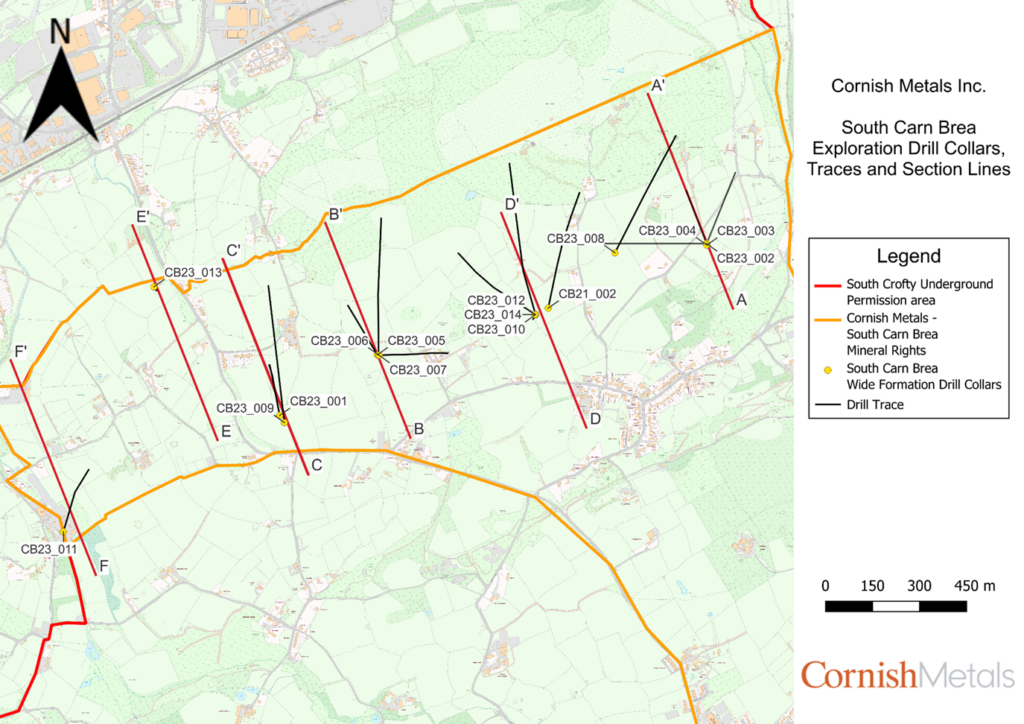
Figure 1: Map of the drillholes completed on the Wide Formation target.
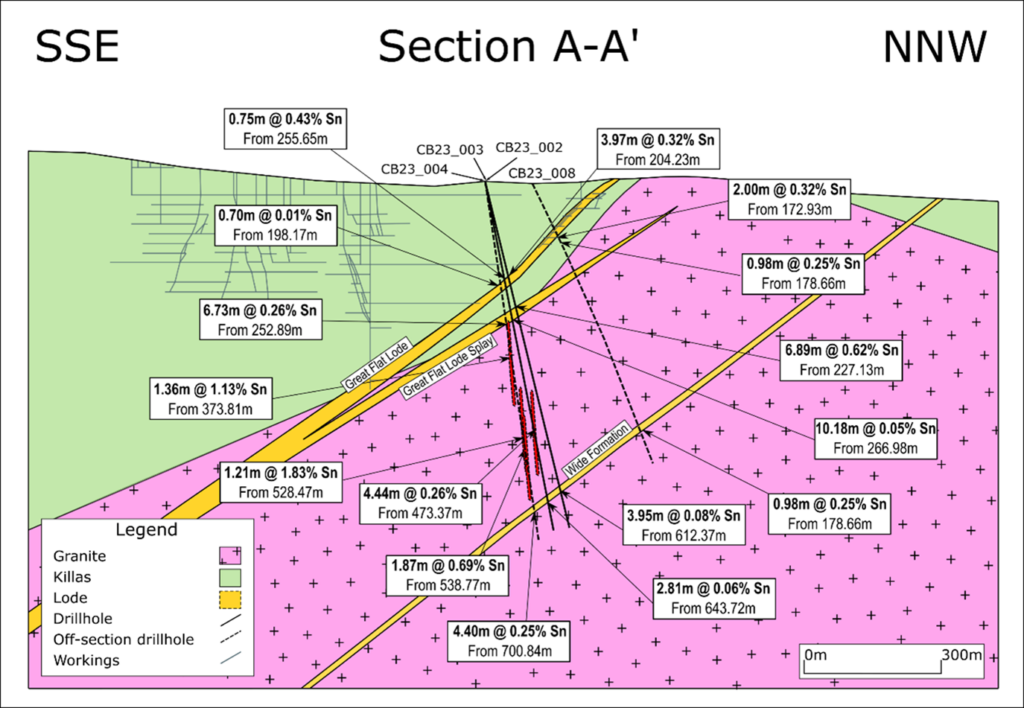
Figure 2: Section A-A’ (looking west) showing CB23_002, CB23_003, CB23_004 and CB23_008.
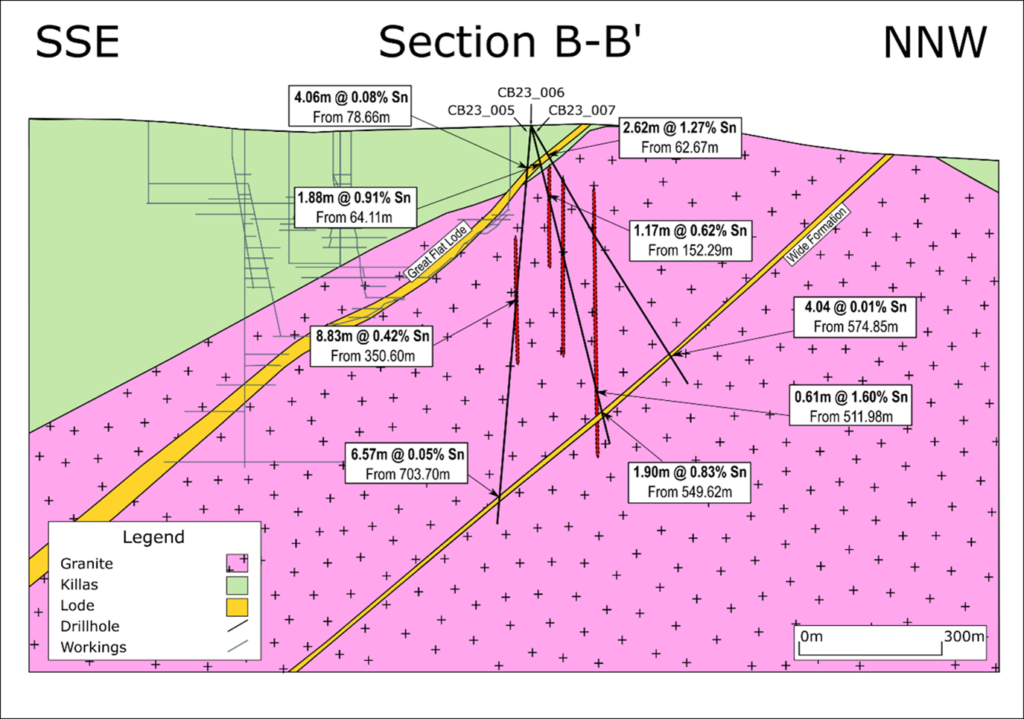
Figure 3: Section B-B’ (looking west) showing CB23_005, CB23_006 and CB23_007.
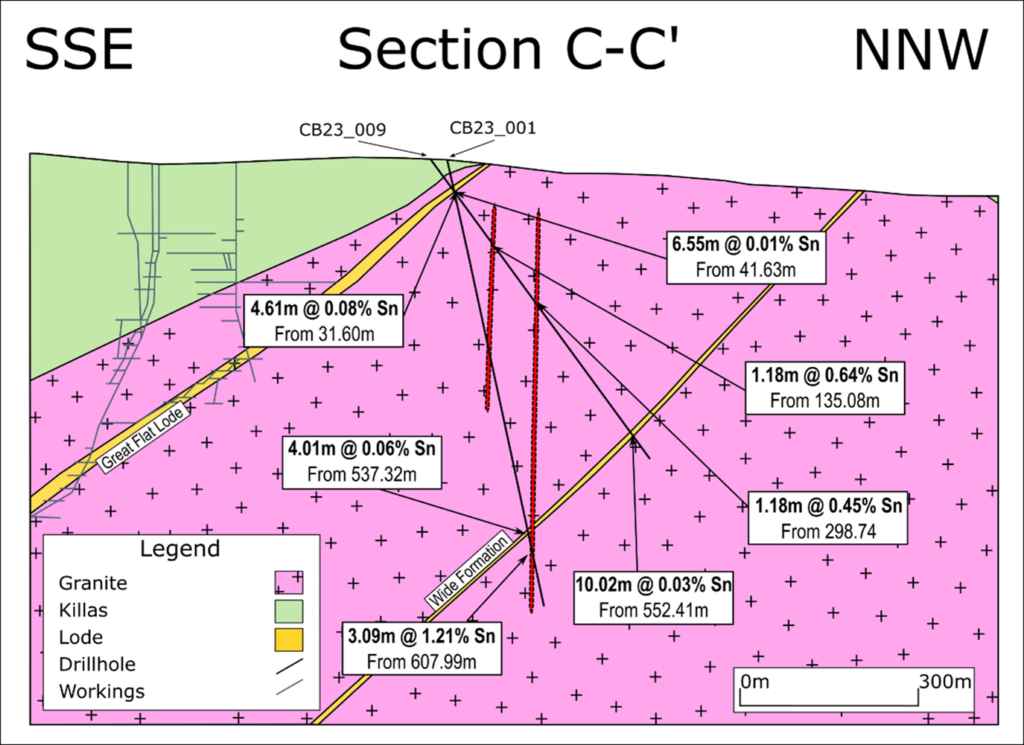
Figure 4: Section C-C’ (looking west) showing CB23_001 and CB23_009.
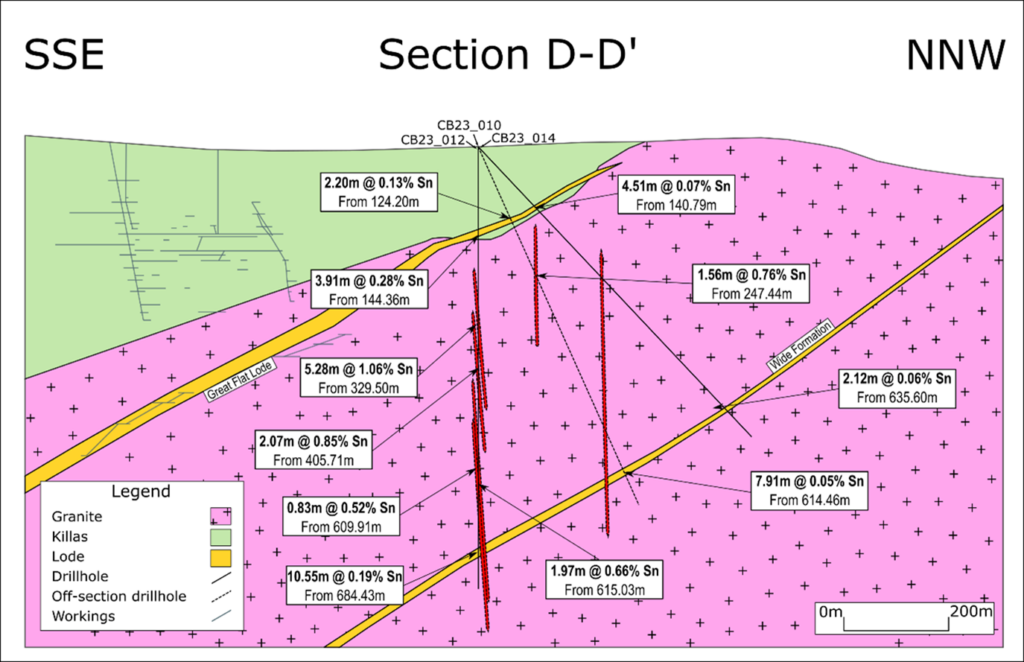
Figure 5: Section D-D’ (looking west) showing CB23_010, CB23_012 and CB23_014.
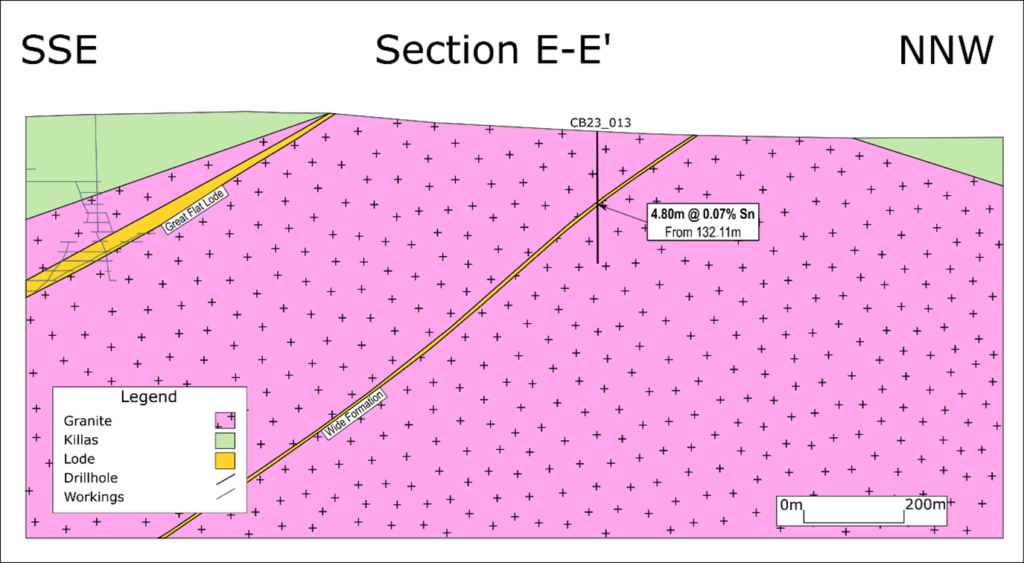
Figure 6: Section E-E’ (looking west) showing CB23_013.
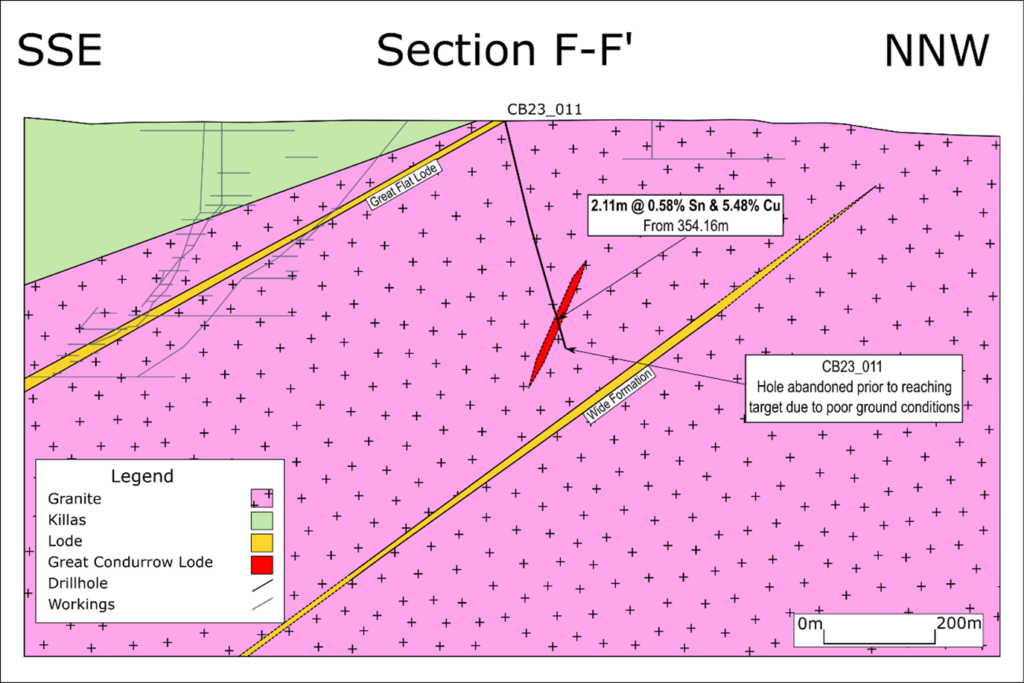
Figure 7: Section F-F’ (looking west) showing CB23_011.
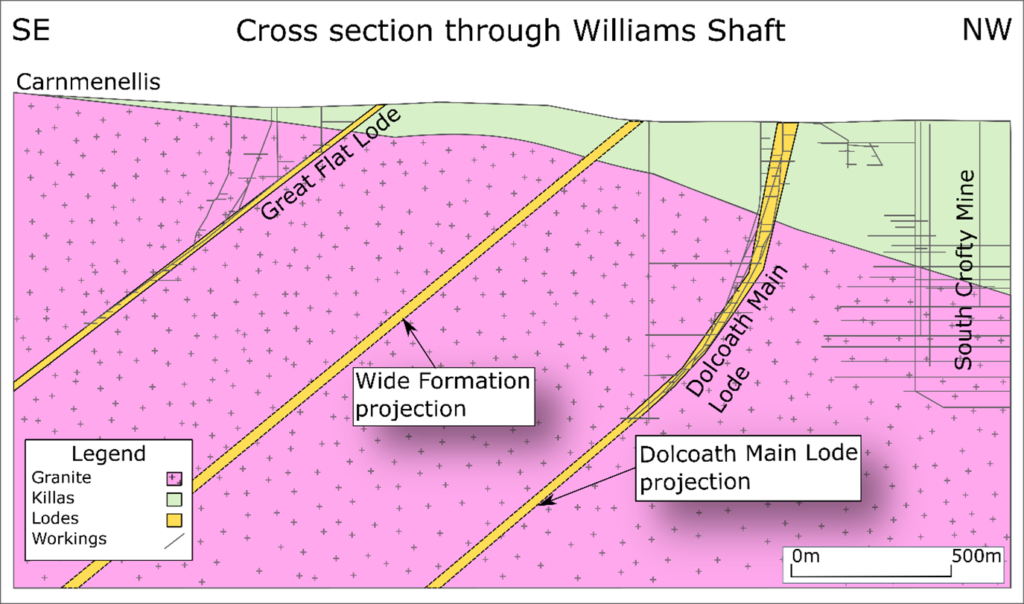
Figure 8: Cross section through Williams Shaft showing Great Flat Lode through to South Crofty Mine.
ABOUT CORNISH METALS
Cornish Metals is a dual-listed mineral exploration and development company focused on advancing the South Crofty high-grade, underground tin project through to a construction decision, as well as exploring its additional mineral rights, located in Cornwall, United Kingdom.
- South Crofty is a historical, high-grade, underground tin mine that started production in 1592 and continued operating until 1998 following over 400 years of continuous production;
- The Project possesses Planning Permission for underground mining (valid to 2071), to construct new processing facilities and all necessary site infrastructure, and an Environmental Permit to dewater the mine;
- South Crofty is one of the highest grade tin Mineral Resources globally and benefits from existing mine infrastructure including multiple shafts that can be used for future operations;
- The 2024 Preliminary Economic Assessment for South Crofty validates the Project’s potential (see news release dated April 30, 2024 and the Technical Report entitled “South Crofty PEA”):
- US$201 million after-tax NPV8% and 29.8% IRR
- 3-year after-tax payback
- 4,700 tonnes average annual tin production in years two through six
- Life of mine all-in sustaining cost of US$13,660 /tonne of payable tin
- Total after-tax cash flow of US$626 million from start of production
- Tin is a Critical Mineral as defined by the UK, American, and Canadian governments;
- Tin connects almost all electronic and electrical infrastructure, making it critical to the energy transition – responsible sourcing of critical minerals and security of supply are key factors in the energy transition and technology growth;
- Approximately two-thirds of the tin mined today comes from China, Myanmar and Indonesia;
- There is no primary tin production in Europe or North America;
- South Crofty benefits from strong local community, regional and national government support.
- Cornish Metals has a growing team of skilled people, local to Cornwall, and the Project could generate up to 320 direct jobs.
The 2024 Preliminary Economic Assessment for South Crofty is preliminary in nature and includes inferred mineral resources that are considered too speculative geologically to have the economic considerations applied to them that would enable them to be categorised as mineral reserves. There is no certainty that the 2024 Preliminary Economic Assessment will be realised. Mineral resources that are not mineral reserves do not have economic viability.
MORE or "UNCATEGORIZED"
Kuya Silver Confirms High-Grade Silver-Gold Vein Mineralization at Umm-Hadid with Initial Drill Results up to 1483.9 g/t AgEq over 2 Metres
Kuya Silver Corporation (CSE: KUYA) (OTCQB: KUYAF) (FSE: 6MR1) is... READ MORE
First Phosphate Closes Final Tranche of Oversubscribed Private Placement
First Phosphate Corp. (CSE: PHOS) (OTCQX: FRSPF) (FSE: KD0) is... READ MORE
GFG Receives Final Payment from the Sale of its Rattlesnake Hills Gold Project
GFG Resources Inc. (TSX-V: GFG) (OTCQB: GFGSF) announces that i... READ MORE
Goliath Receives $1,730,882 Through Warrant Exercises, Inclusive Of Crescat Capital A Longtime Strategic And Cornerstone Shareholder
Goliath Resources Limited (TSX-V: GOT) (OTCQB: GOTRF) (FSE: B4IF)... READ MORE
Robex Pours First Gold at Kiniéro on Schedule and Budget
Highlights: Gold bar weighing 2.64 kilograms (85 oz) poured in th... READ MORE












